Breeding fish can be a rewarding and challenging hobby, but when it comes to the Cardinal Tetra, many aquarists struggle to breed this stunning fish successfully.
The Cardinal Tetra is popular among aquarium enthusiasts due to its unique colouration and delicate appearance. However, breeding these fish requires a much more delicate approach than many other species. Specific breeding techniques must be followed to ensure a successful outcome, and any deviation from these guidelines can result in failure.
Here, we’ll explore the proven techniques for Cardinal Tetra breeding developed by experienced aquarists. From the necessary tank setup to the proper feeding techniques, we’ll cover everything you need to know to breed these beautiful fish successfully. Whether you’re a beginner or an experienced aquarist, this post will give you the knowledge and guidance you need to breed Cardinal Tetras successfully.
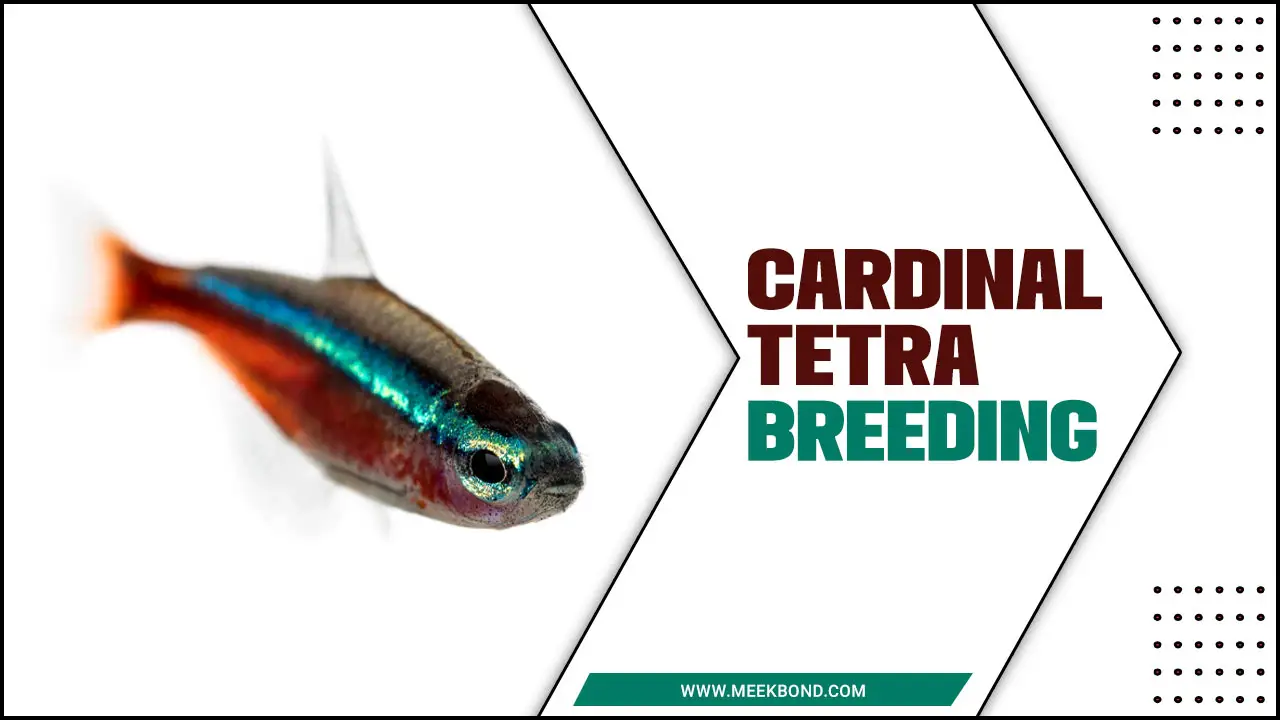
Expert Technique For Successfully Cardinal Tetra Breeding
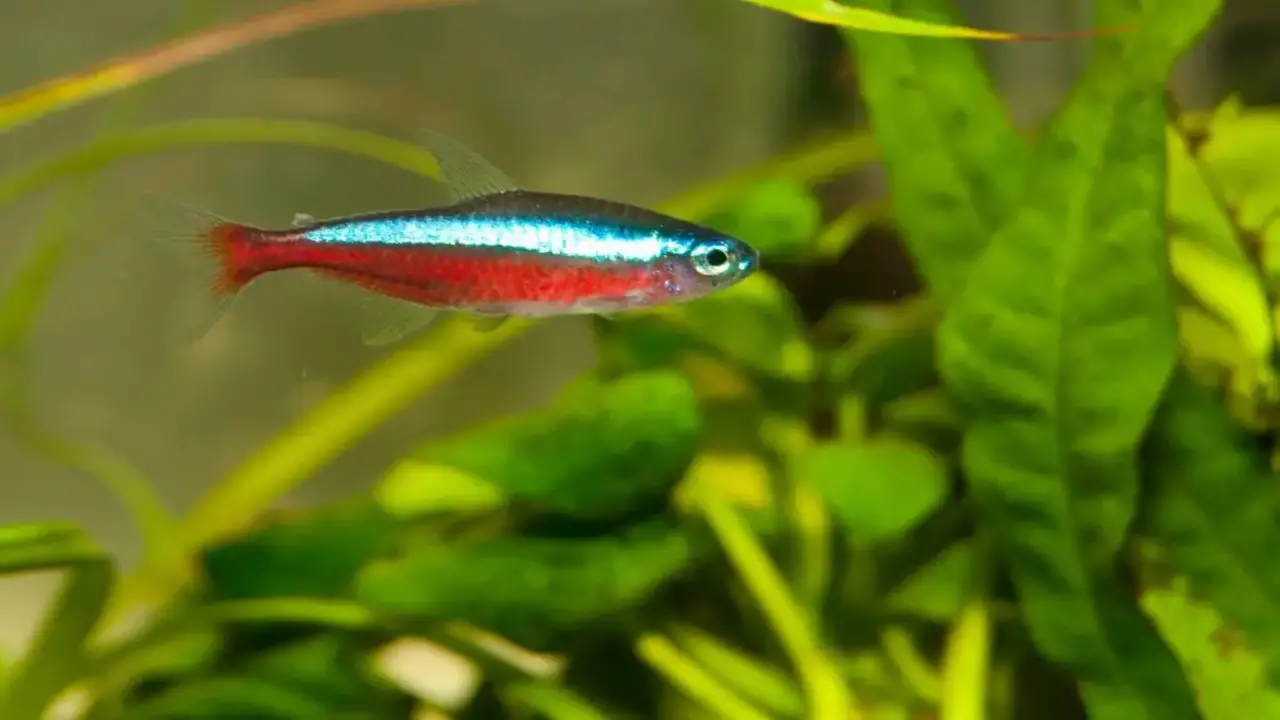
Breeding cardinal tetras can be a challenging yet rewarding experience for aquarium hobbyists. These small, vibrant fish are known for their striking blue and red colouration, making them popular for planted aquariums. Breeding cardinal tetras can be a rewarding experience for aquarium enthusiasts. Here are some expert techniques to help you successfully breed cardinal tetras:
- Create the ideal breeding environment: Provide your cardinal tetras with a well-maintained tank that mimics their natural habitat. This includes maintaining stable water parameters, providing plenty of hiding places, and ensuring proper lighting.
- Condition your breeding pair: Before attempting to breed, it is important to condition your cardinal tetras. Feed them a varied diet of high-quality foods to ensure they are healthy and ready to reproduce.
- Separate the breeding pair: Once you have identified a compatible male and female, separating them into a separate breeding tank is best. This will allow them to focus on each other and increase the chances of successful breeding.
- Provide appropriate spawning material: Cardinal tetras are egg scatterers, so it is important to provide suitable spawning material, such as fine-leaved plants or a spawning mop
- Monitor water conditions: Throughout the breeding process, it is crucial to monitor water conditions, including temperature and pH levels, closely. Maintaining optimal water quality will increase the chances of successful egg fertilization and hatching.
- Remove adult fish after spawning: Once the eggs have been laid, removing the adult fish from the breeding tank is recommended. This will help prevent them from eating the eggs or fry.
- Care for the fry: After hatching, the fry will require special care and attention. Feed them with infusoria or commercially available fry food until they are large enough to consume larger food particles.
Understanding The Natural Habitat And Behavior Of Cardinal Tetras
Understanding cardinal tetras’ natural habitat and behaviour is crucial for successful breeding. These vibrant fish are native to the Amazon basin and inhabit slow-moving rivers and tributaries with dense vegetation. To mimic their natural environment, providing them with a well-planted aquarium that replicates their preferred habitat is important.
Cardinal tetras are shoaling fish, so keeping them in groups of at least six individuals is recommended. They are also sensitive to water conditions, so maintaining stable water parameters and providing a balanced diet is essential for their overall health and breeding success. Creating optimal conditions for cardinal tetras can increase the likelihood of successful breeding and help you enjoy these beautiful fish in your aquarium.
Setting Up The Optimal Breeding Tank For Cardinal Tetras

The optimal breeding tank for cardinal tetras is essential for successful breeding. When creating a breeding tank, it is important to replicate the natural habitat of cardinal tetras as closely as possible. Start by selecting a tank with a capacity of at least 10 gallons, as cardinal tetras require space to swim and breed comfortably.
The water temperature should be maintained between 78-82°F (25-28°C), and pH levels should range from 5.5-7.0. Additionally, provide plenty of live plants and floating vegetation to create hiding spots for the tetras and mimic their natural environment.
To encourage breeding, consider adding a spawning mop or mesh netting where the female can deposit her eggs. It is also important to feed the tetras a varied diet consisting of high-quality flake food, frozen or live foods such as brine shrimp or daphnia, and occasional treats like bloodworms or tubifex worms. With the right setup and care, your cardinal tetras will increase the chance of successful breeding in the optimal breeding tank environment.
Creating The Right Water Conditions For Breeding Success
Creating the right water conditions is crucial for successful cardinal tetra breeding. These beautiful fish are native to the Amazon Basin, where they thrive in soft, acidic water with a pH level between 4 and 6. To mimic their natural habitat, you must adjust your aquarium’s water parameters.
Start using a high-quality water conditioner to remove chlorine or heavy metals from tap water. Then, lower the pH level by adding peat moss or almond leaves to the tank. By creating the ideal water conditions, you can increase the likelihood of successful reproduction and enjoy watching your cardinal tetras breed and raise their fry.
Choosing Compatible Breeding Pairs Of Cardinal Tetras
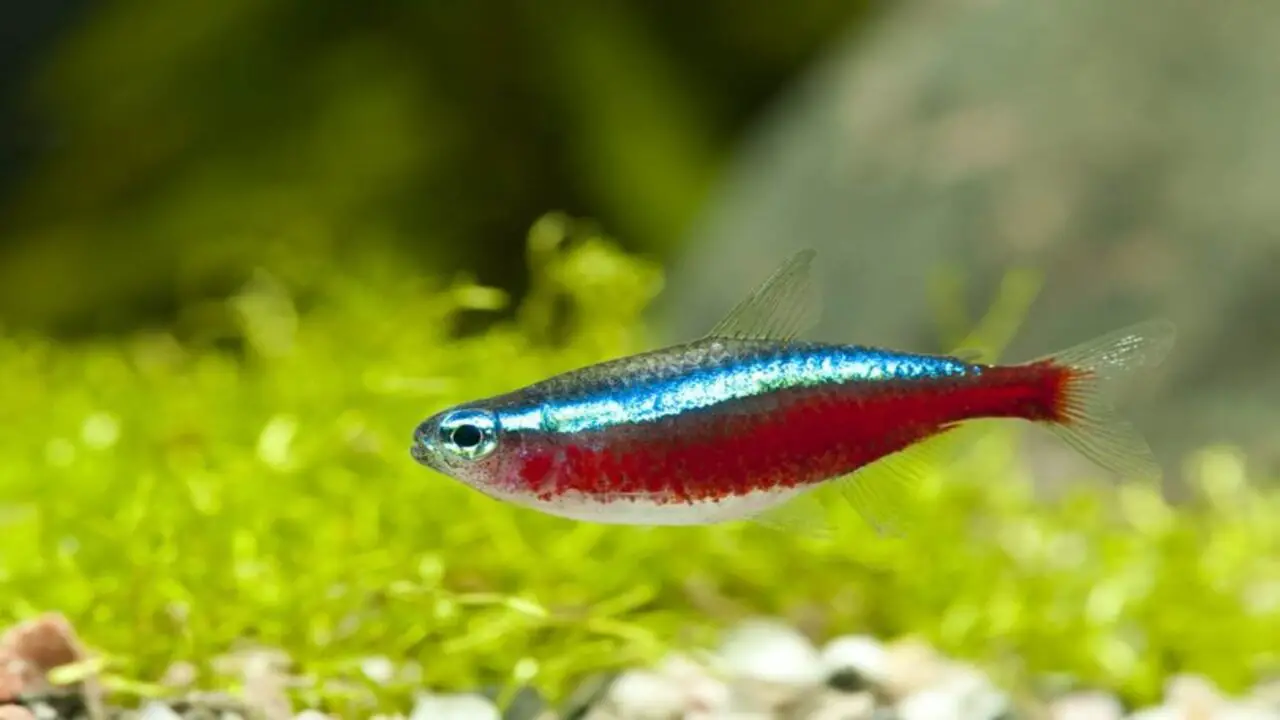
Breeding cardinal tetras can be a rewarding and enjoyable experience for fish enthusiasts. When selecting breeding pairs, it is important to choose compatible individuals to increase the likelihood of successful reproduction. Look for healthy, vibrant cardinal tetras that are similar in size and show signs of good overall condition.
Observing their behaviour and choosing pairs with compatible mating behaviours, such as courtship displays and fin flaring, is also beneficial. By carefully selecting compatible breeding pairs, you can enhance the chances of successful cardinal tetra breeding and contribute to the conservation of this beautiful species.
Stimulating The Breeding Process Through Temperature And Lighting Changes
Breeding cardinal tetras can be an exciting and rewarding experience for aquarium enthusiasts. One key factor in stimulating the breeding process is temperature. Cardinal tetras prefer warmer water temperatures, typically around 78-82 degrees Fahrenheit (25-28 degrees Celsius). Maintaining a consistent and slightly elevated temperature in the aquarium can help create the ideal environment for spawning.
It is important to ensure that the water parameters, such as pH and hardness, are also suitable for breeding. Providing plenty of hiding spots and plants in the aquarium can also encourage the tetras to feel secure and comfortable, enhancing their chances of successful breeding. With the right conditions and care, you may soon find a school of adorable cardinal tetra fry swimming in your tank.
Providing Hiding Spots And Spawning Mops For Egg-Laying
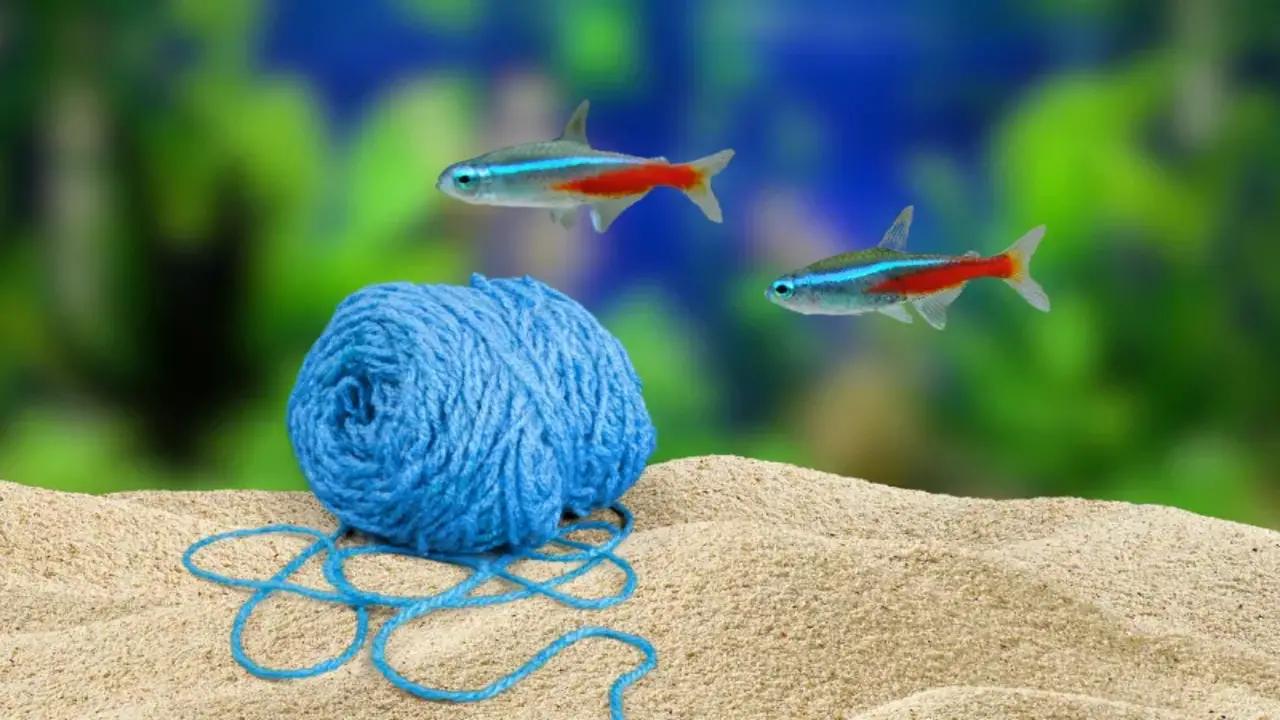
Cardinal tetras are known for their vibrant colours and are popular among aquarium enthusiasts. If you are interested in breeding cardinal tetras, creating the right environment for successful reproduction is important. One key aspect is providing hiding spots and spawning mops for the female to lay her eggs. These include plants, caves, or artificial structures that mimic natural habitats.
The male will then fertilize the eggs, and the eggs will hatch after about 24-36 hours. Removing the parents from the tank after spawning is important to prevent them from eating their own eggs or fry. You can enjoy the beauty of a thriving cardinal tetra population in your aquarium with proper care and attention to their breeding needs.
Removing Adult Fish After Spawning To Protect Eggs And Fry
One important step in cardinal tetra breeding is to remove the adult fish after spawning to protect the eggs. Cardinal tetras are known to be egg scatterers, meaning that they lay their eggs randomly among plants or other surfaces in the aquarium.
However, if the adult fish are not removed after spawning, they may eat the eggs, resulting in a low survival rate for the offspring. Removing the adults can ensure the eggs have a better chance of hatching and growing into healthy fry. This can be done by transferring the adults to a separate tank or using a divider within the same tank.
It’s important to provide optimal conditions for the eggs, such as maintaining clean water and providing suitable hiding spots for the fry once they hatch. You can increase your chances of successful cardinal tetra breeding with proper care and attention.
Caring For Cardinal Tetra Eggs And Fry
Breeding cardinal tetras can be a rewarding experience for aquarium enthusiasts. Once the female cardinal tetra lays her eggs, providing the right conditions for their development and caring for the fry once they hatch is important.
The eggs should be carefully removed from the breeding tank and placed in a separate container with clean, aged water. Maintaining the water temperature and quality is crucial to ensure the health of the eggs and fry. Feeding the fry with small, nutritious foods such as baby brine shrimp or crushed flakes is essential for their growth and survival.
Regular water changes and monitoring of water parameters are also necessary to create a conducive environment for the young cardinal tetras. You can successfully breed cardinal tetras with proper care and attention and witness their vibrant colours filling your aquarium.
Feeding And Raising Healthy Cardinal Tetra Fry
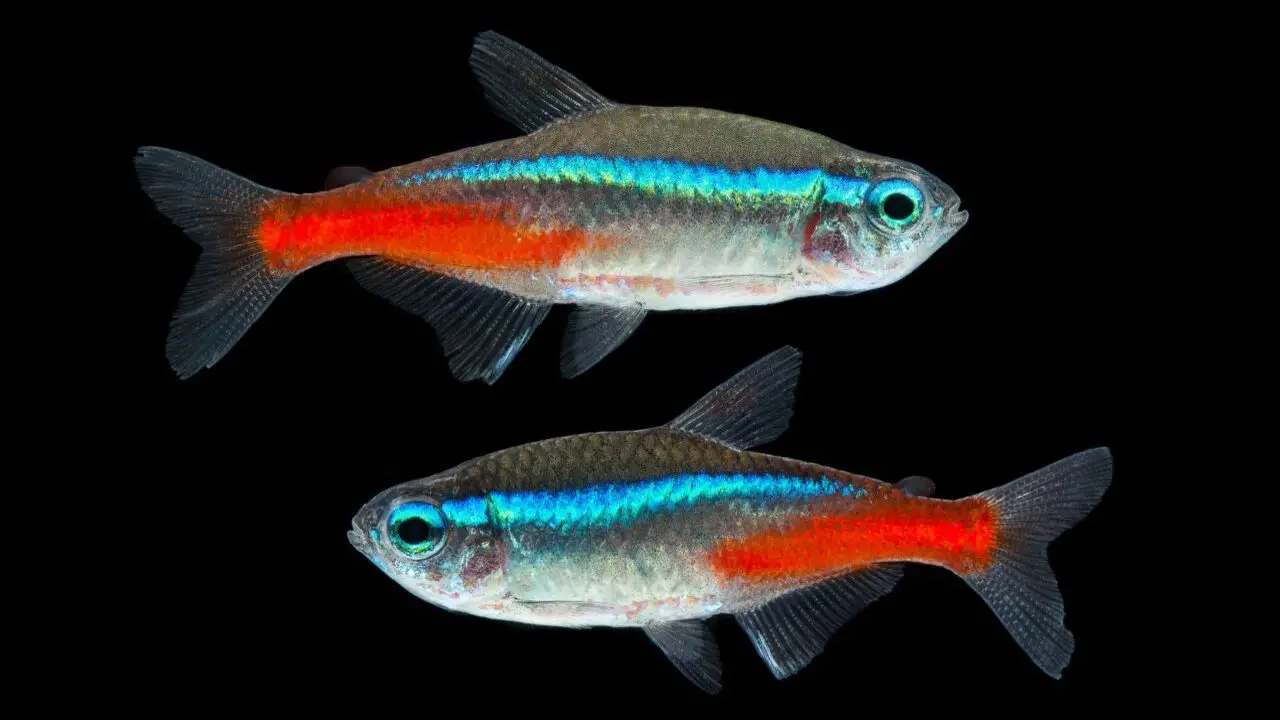
Feeding and raising healthy cardinal tetra fry is crucial for successful breeding. Once the eggs hatch, the fry is extremely small and delicate, requiring specialized care. When it comes to feeding, it is important to provide them with a diet suitable for their size and nutritional needs.
Infusoria, baby brine shrimp, and commercial liquid or powdered fry food are good options for feeding cardinal tetra fry. Maintaining clean water conditions and providing ample hiding places for the fry to feel safe and secure is also important. With proper care and attention, you can ensure your cardinal tetra fry’s healthy growth and development.
How To Successfully Breed Cardinal Tetras At Home?
Successfully breeding Cardinal Tetras at home can be a rewarding experience for aquarists. Here are some tips to help you with the process:
- Create the right environment: Cardinal Tetras prefer soft, slightly acidic water conditions. Maintain a pH level between 5.5 and 7.0 and a temperature of around 78°F (25°C). Provide plenty of plants and hiding spots in the aquarium.
- Select healthy adult fish: Choose mature, healthy Cardinal Tetras for breeding. Look for vibrant colours, strong fins, and active behaviour.
- Condition the breeders: Feed the adult fish a varied diet of high-quality foods to ensure optimal health and condition for breeding. Include live or frozen foods like brine shrimp or daphnia to mimic their natural diet.
- Separate males and females: Place a group of males and females in separate tanks for conditioning. Provide optimal conditions and feed them well to enhance their reproductive readiness.
- Use a spawning medium: Cardinals Tetras are egg scatterers, so provide them with suitable spawning materials like fine-leaved plants or spawning mops. The eggs will stick to these surfaces.
- Observe courtship behaviours: Males display vibrant colours and chase females during courtship. Watch for pairing behaviour signs, such as zigzagging movements or trembling displays.
- Collect the eggs: After spawning, remove the adults from the tank to prevent them from eating them. Transfer the eggs.
Troubleshooting Common Issues In Cardinal Tetra Breeding
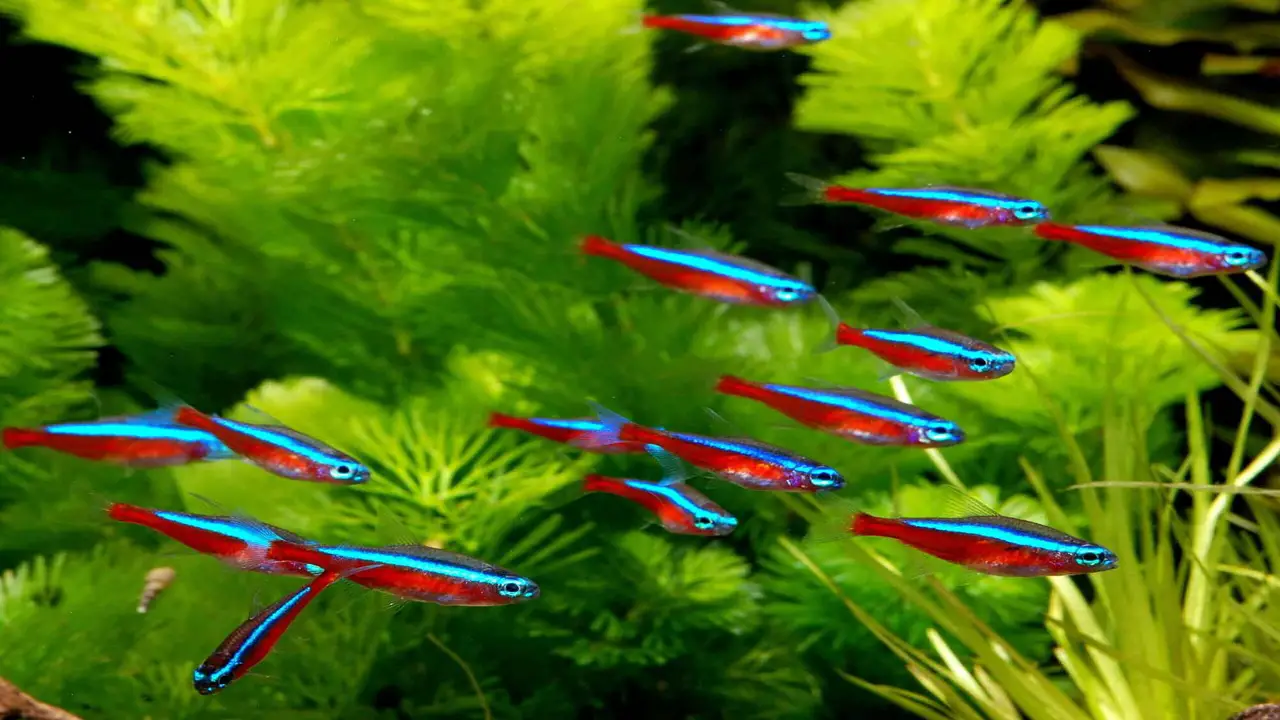
Breeding Cardinal Tetras can be a challenge for even experienced aquarists. In their natural habitat, Cardinal Tetras are found in the blackwater Amazon tributaries, where the water is soft, acidic, and stained with tannins.
Breeding cardinal tetras can be a rewarding experience, but it’s not always without its challenges. Here are some common issues that may arise during the breeding process and some troubleshooting tips to help you overcome them:
- Lack of spawning: If your cardinal tetras are not showing any signs of spawning, it could be due to water quality, temperature, or inadequate diet. Ensure that the water parameters are within the appropriate range for breeding (pH around 6.0-7.0, temperature around 78-80°F), and provide a varied diet consisting of live or frozen foods.
- Egg fungus: Fungus growth on eggs is a common problem in cardinal tetra breeding. To prevent this, ensure that the breeding tank is clean and well-maintained. Remove any unfertilized or fungus-infected eggs promptly to prevent the spread of infection.
- Low hatch rate: If you notice a low hatch rate of eggs, it could be due to poor water quality or improper incubation conditions. Maintain optimal water parameters and gentle aeration and filtration in the breeding tank. Consider using a separate incubation setup with controlled conditions for better success.
- Aggression towards fry: Sometimes, adult cardinal tetras may show aggression towards their fry, leading to high mortality rates. Provide plenty of hiding places, such as plants or mesh nets, to protect the fry from being eaten by their parents or other tankmates.
Remember that successful breeding requires patience and attention to detail. Addressing these common issues and making necessary adjustments can increase your chances of successfully breeding cardinal tetras in your aquarium.
Conclusion
Breeding cardinal tetras can be a rewarding and fascinating experience for fish enthusiasts. By following proven techniques and providing optimal conditions, you can increase your chances of successfully breeding these beautiful fish. It is important to create a suitable environment with proper water parameters, plenty of hiding spots, and a balanced diet to ensure the health and well-being of the cardinal tetras.
Patience and careful observation are key during the breeding process, as it may take time for the fish to establish pairs and for the eggs to hatch. With dedication and knowledge, you can enjoy the wonders of cardinal tetra breeding in your home aquarium.
Frequently Asked Questions
Do Tetra Fish Breed Easily?
Tetra fish, including cardinal tetras, can breed relatively easily under the right conditions. However, successful breeding still requires proper water parameters, temperature control, and a balanced diet. Creating a suitable breeding environment with plenty of hiding spots for the fry is important to increase their survival rate.
What Does A Pregnant Cardinal Tetra Look Like?
A pregnant cardinal tetra may appear slightly rounder and have a fuller belly than non-pregnant females. This is because the female will carry eggs in her abdomen as she prepares to lay them. However, it can be difficult to determine if a cardinal tetra is pregnant visually. The eggs are usually small and not easily visible from the outside. Observing their behavior and breeding activity best confirms if they are ready to lay eggs.
What Temperature Do Tetras Breed?
Tetras, including cardinal tetras, typically breed at temperatures ranging from 75 to 82 degrees Fahrenheit (24 to 28 degrees Celsius). Maintaining a stable temperature within this range is crucial for successful breeding.
Sudden fluctuations or extremes in temperature can disrupt the breeding process and negatively impact the eggs and fry. Therefore, having a reliable heater and thermometer in your aquarium is essential to ensure optimal breeding conditions for your tetras.
Why Are Cardinal Tetras So Expensive?
Cardinal tetras are relatively expensive due to several factors. They are native to the Amazon rainforest, so the cost of capturing and exporting them from their natural habitat adds to their price. Additionally, cardinal tetras have specific water requirements and must be kept in well-maintained conditions, increasing the cost of their care.
What Is The Best Breeding Time For Cardinal Tetras?
The best breeding time for Cardinal Tetras is typically during the rainy season in their natural habitat, which usually occurs from April to July. During this time, water conditions are most favorable for breeding, with slightly lower temperatures and increased rainfall. However, it is important to note that breeding can still occur in aquariums throughout the year with proper care and conditioning of the fish.

Aquarium passion is all about connecting with the aquatic life and providing education to the public on the importance of these creatures. We showcase a wide variety of marine life through our exhibits as well as working with schools to provide unique learning opportunities for students of all ages.









